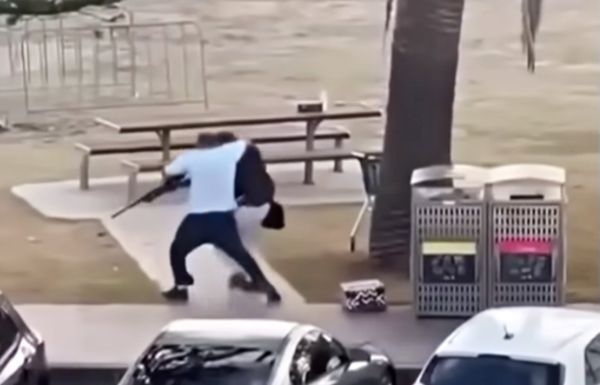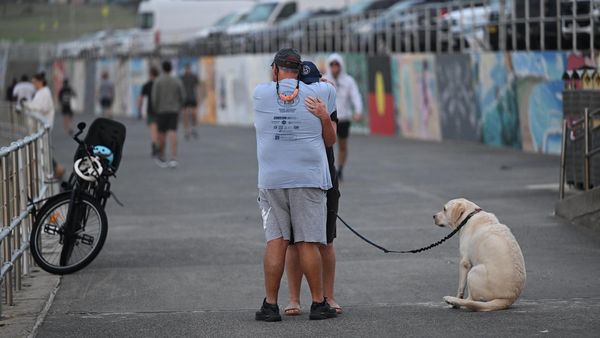
By the time Aaliyah Bobina turned 18 she had already seen two people die from gunshot wounds. One was a neighbor who was shot in the apartment complex she lived in. The other was a teenage girl who was shot at a party last summer. She didn’t know the girl, but held her hand as she bled from her chest.
“[The police] came hecka late and she passed away right in front of of us. It was so sad and traumatizing,” Bobina said. “I told her she would be OK and I feel so bad because I couldn’t keep my word.”
Experiences like these are not uncommon for young people like Bobina in Oakland, California, a city that historically has higher rates of gun violence than the rest of the county. Between 2019 and 2023, guns were the leading cause of death for those under 24 in Alameda county, the area that encompasses Oakland, according to a first-of-its-kind report on gun violence released by the district attorney’s office earlier this month.
The Guardian spoke to four young people who live in Alameda county about these numbers, and none of them were surprised. They said that the grim statistics are less an indictment of the people who live there than a reflection of the easy availability of guns, especially among young people, and the apathy they see people in power have for the neighborhoods that deal with the most shootings.
“I feel like police should do more and have detectives figure out where these kids are getting these guns,” Bobina said. “I feel like they started to give up on Oakland because the same stuff keeps happening.”
Amaar Karim, a 17-year-old Oakland resident, agreed. “People think that the city can never be brought up again,” he said. “As much effort as they put into talking down on Oakland – y’all could try to help.”
The years from 2019 to 2023 were an especially tough time for kids and teens, not just in Alameda county but across the US. There was an unprecedented nationwide increase in homicides, and when most public schools switched to online learning, kids and teens missed out on the in-person time with their peers and trusted adults that could be a counterweight to the heaviness of the death and injury happening around them.
“I look left and right on social media and there’s another kid under the age of 20 dying,” said Karim.
Amari Rhodes, a 17-year-old who lives in Oakland, remembers sitting in the car with her mother in 2022 when a “full blown shootout” began. She recalls hurrying to get out the way as the sound of car windows shattering surrounded her.
“Honestly, gun violence is something that’s a never-ending factor,” she said.
These sorts of exposures to gun violence, though rarely captured in news articles and research, can greatly affect young people and lead to mental health challenges, suicidal ideations and future participation in the cycle of community gun violence.
Bobina, Karim and Rhodes all attend the East Oakland Youth Development Center (EOYDC), a nearly five-decade-old organization and community hub, and say that this safe haven is one of the few places where teens like them can find respite from the stress of living in close proximity to violence. But spaces like these remain few and far between, Rhodes said.
Three years ago, while Karim was at a park trying out for a local football team, someone pulling up and fatally shot another player’s father, he recalls. After the shooting a group called Restorative Justice for Oakland Youth (RJOY) organized a healing circle filled with food and conversation for the kids who were affected. This sort of response from adults, Karim says, needs to happen more often.
The increase in shootings and homicides in 2020 and 2021 combined with the disruption of the integral in-person aspects of violence prevention left many youth to fend for themselves. For young people like Nathan Salinas, that meant getting involved with increasingly risky behaviors including carrying a gun.
“I was just floating around,” he recalls of the lockdown era of the pandemic. “I would just start hanging out and be with other kids and our actions started getting worse.”
Salinas, now 20, was born and raised in deep East Oakland, an area that has faced decades of concentrated violence and other health disparities. He remembers hearing people test out their weapons at a park near his house when he was 10. As a young teen he started hearing his peers talk about how they needed guns to protect themselves. When he turned 16 he bought his first firearm from another teenager.
After the purchase, he says he went to test it out at the same park. For the next two years, his life followed a pattern: getting arrested for having a gun, getting out of jail, then buying a new one.
Now Salinas is a fellow with the Communities United for Restorative Youth Justice (CURYJ), a non-profit that employs and supports formerly and currently incarcerated youth, and goes into juvenile halls throughout the Bay Area to help young people begin to change their lives.
He said it was unsurprising that gunshot wounds are the number one cause of death for people his age, especially since he sees people increasingly pick up guns to settle conflicts. But he hopes that making this data public encourages officials throughout the county to step up and invest in healing programs and rehabilitation for formerly incarcerated youth like himself.
The young people all agree that the programs they are involved with give them hope that the cycle of gun violence can one day be broken. They also hope that residents who chide the city over crime get involved, and that reporters who cover violence spend some their resources highlighting homegrown solutions.
“If y’all are gonna put the bad out there at least put the work in to do some good,” Salinas said. “I feel like Oakland is a city of resilience. A lot of people my age go through worse stuff than me but we still make it out.”







